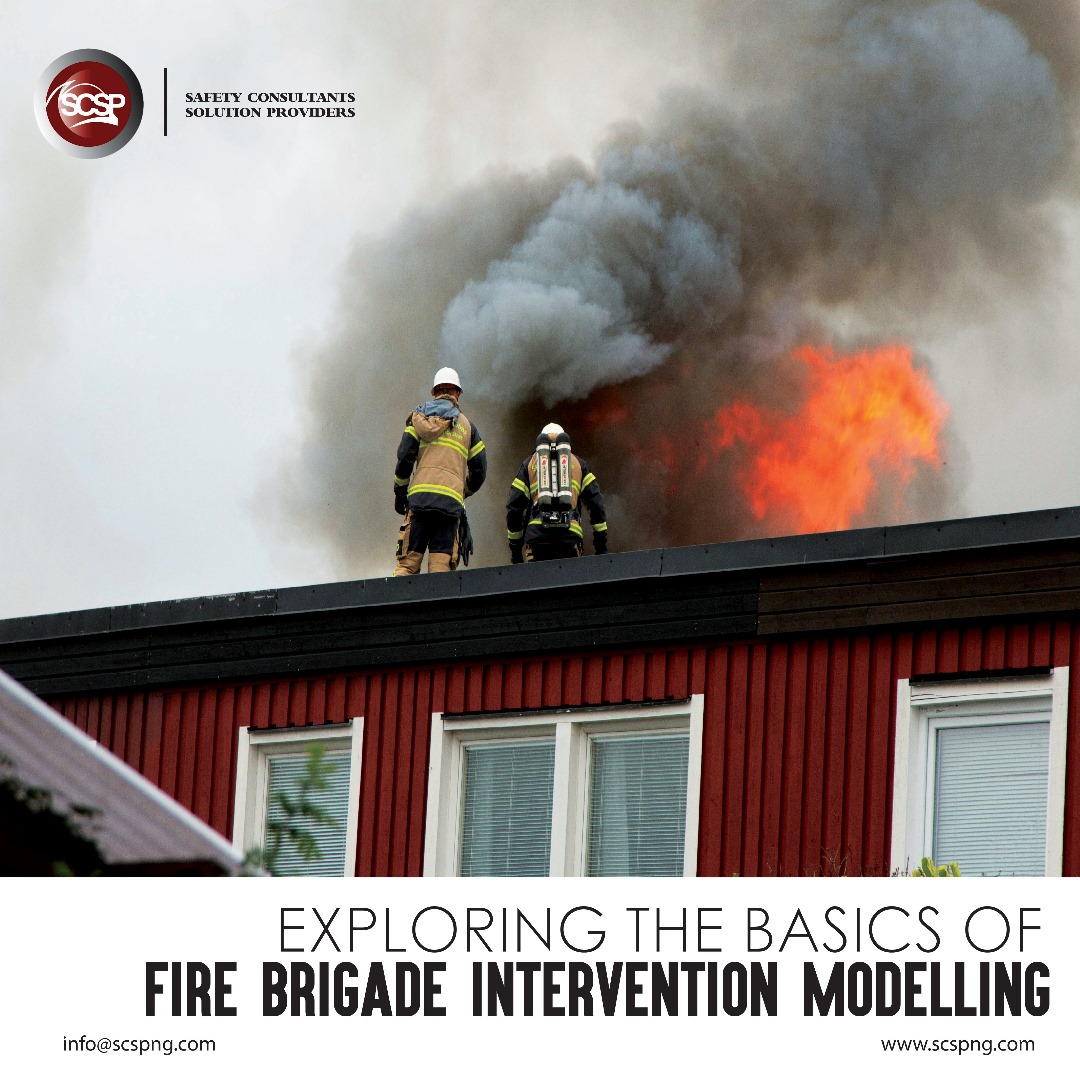OVERVIEW OF FIRE BRIGADE INTERVENTION MODELLING
When a serious fire breaks out, Fire Service Intervention (FSI). The main objective of fire service intervention during a fire incident is to rescue people and to control or extinguish the fire. However, this cannot be guaranteed. The extent to which a fire can be brought under control and extinguished depend on many random factors such as time from ignition to contacting the fire service, the time it takes for fire service to reach the scene, the time to start intervention, the size of the fire, the rate and nature of spread and other human factors. Therefore, a holistic assessment is taken into consideration to the intricacies of the behavior of fire service intervention.
FIRE FIGHTING NEEDS AND BUILDING DESIGN REQUIREMENT
Building design have traditionally been traditionally required to provide sufficient facilities to support firefighting operations based on the requirements of building codes and safety and fire prevention measures. These requirements are dependent on resources, equipment type and methods employed when fighting fires. To ensure that the needs of fire service are provided within a building using performance-based design methods, an understanding of fire brigade operations and how a fire brigade uses the fire brigade facilities provided within buildings together with legislative requirements can a designer ensure that the level of safety provided to the building and its occupants.
LEGAL RESPONSIBILITY OF FIRE SERVICE FOR SAFE AND HEALTHY PLACES
The fire department like other public and private organizations also have legal responsibility to manage risk the public and employees are exposed to. as enshrined by Occupational Safety and Health laws and regulations, it is important to provide to provide safety and minimize losses. However, because of the nature of their mission many fire departments have limited statutory immunity under state laws. Many legal decisions have found that the duty of a fire department is to protect the community at large from fire even though the rules are different, the mandate and mission is same.
BUILDING LEGISLATION AND FBIM
Although every country has applicable building code applicable to the country, the way in which building design is enforced especially from a fire brigade perspective differs from region to region. This means that there is a direct correlation between how effective a fire service is at enforcing building legislation and their own requirements and how often and to what degree designers are implementing safety requirements. The widespread knowledge and use of FBIM is in setting the principle from deviation that can affect fire service intervention. Apparently, the involvement of fire brigade in the design, review process and also on their enforcement powers at design or safety stage is non-negotiable. The early liaison and consultation to produce a more risk-free environment is a wise safety standard and procedure.
ADVOCATING FOR COMMUNITY RISK REDUCTION
Community risk reduction means programs, actions and services adopted by a community which prevent or mitigate the loss of life, property and resources associated with life safety and other disasters within a community. Community risk reduction is nothing new to fire and emergency services, however due to changes in the community, numerous fire and life safety programs have not been able to be sustained or are no longer relevant. On the other hand, community risk reduction creates goodwill and help communities face new and emerging hazards, increases firefighter safety and is proactive in building support before an incident occurs. Community risk reduction is a gateway to the intervention of the fire service culture. As such, we need to start making fire, life safety, and security education a priority in our communities.
CAPABILITY OF FIRE BRIGADE RESPONSE
A fire brigade must be in a state of readiness to respond to any reported fire. While preparing and planning is in place, the fire crew can be involved in other safety activity. This may include building or hazard familiarization, conducting drills or even response activity outside the area of responsibility or commitment. As part of their normal function, a planned strategy is usually in place to ensure that a backup system exist. Fire brigade from neighboring stations are placed on standby to respond in the instance that the fire brigade responsible for that particular area is otherwise engaged.
ROLE OF FIRE ENGINEERS IN SAFETY
The role of fire engineers and safety professionals in building designs and construction cannot be overstated. Their specialized knowledge and dedication to fire safety contribute significantly to creating safer environments for occupants and safeguarding valuable assets from potential fire accidents. By integrating fire safety measures from the early design stage to ongoing building management, these experts play an essential part in reducing the impact of fires and providing peace of mind to building owners alike.
SCSP Comprehensive Advisory Services.
Click here for additional Insights & Guides from SCSP Experts.










